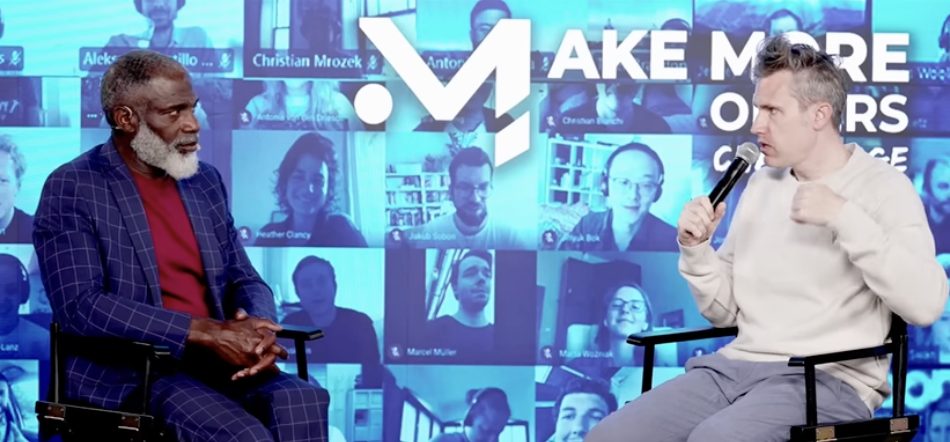The digital landscape has undergone a dramatic transformation since the early days of social media. What began with 25 million Myspace users has exploded to 5 billion people across various platforms. It went viral. Yet despite this massive audience, most content creators struggle to gain traction.
After listening to Myron Golden’s conversation with viral expert Brendan Kane, I’ve gained powerful insights into why 99% of social media creators fail to achieve their goals. As someone passionate about business growth and personal finance, I found his approach both refreshing and practical.
The Passive Consumer Trap
The first major mistake most people make is having a passive experience with social media. They endlessly scroll, consuming content without understanding what makes certain videos perform better than others. This passive mindset prevents them from recognizing the structured “formats” that drive viral success.
What exactly is a format? Kane defines it as “a well-researched, repeatable structure or blueprint that’s proven successful time and again.” Think of it as a container for your message, product, or service. While most people believe that viral content happens by chance, there is actually a science behind it.
This revelation changed my perspective completely. I’ve spent countless hours on social media without recognizing these patterns. Now I see them everywhere—from “Man on the Street” interviews to “Two Characters, One Light Bulb” explainers.
The Format Finding Framework
Kane’s team has logged over 10,000 hours analyzing content and identified more than 300 different formats that drive viral success. The key is finding the right format for your personality, resources, and goals.
To identify potential formats, Kane recommends this simple process:
- When you see a viral video with millions of views, click on the creator’s profile
- Check if they’ve used the same format consistently (at least 5-10 times) to break through
- If they have, you’ve identified a proven format worth studying
This approach helps distinguish between fleeting trends and sustainable formats. While trends like the Ice Bucket Challenge come and go, formats can work for years or even decades. Some creators have used the same format for 3-5 years with consistent success.
The Critical Analysis Most Creators Skip
The most important step—which 99% of creators skip—is analyzing the difference between high-performing and low-performing content within the same format. Kane refers to this as the “gold, silver, bronze” system.
I was fascinated when Kane demonstrated this by comparing Myron Golden’s own content. He showed two videos—one with 11,000 views and another with 2.6 million views. The difference wasn’t production quality or topic, but how the content was framed in the first few seconds.
The viral video opened with a pattern-breaking statement: “Instead of kicking our children out when they’re 18, they come to work with us in our family business.” This immediately created a shift in perspective that captured attention.
In contrast, the lower-performing video started with abstract concepts about “setting an intention” and “stepping into awareness”—language that didn’t immediately connect with viewers or create curiosity.
The Generalist Principle
Another key insight is what Kane calls “the generalist principle”—making specialized knowledge accessible to a wider audience while still targeting your core customers.
This explains why some niche experts generate millions of views. They frame their expertise in ways that appeal beyond their target market. For example, a luxury real estate agent might show tours of $250 million homes. While few can afford such properties, millions enjoy the content, and the small percentage who are potential buyers still see it.
I’ve seen this principle work across industries. The math is simple: 5% of a million views will always be more valuable than 80% of a thousand views.
Practical Application for Any Creator
What I appreciate most about Kane’s approach is its practicality. You don’t need fancy equipment or a large team to implement these strategies. He shared the story of a hand doctor who went from zero followers to 750,000 by simply recording herself talking into an iPhone about her ER experiences.
The key questions to ask yourself are:
- What resources do I have available?
- Which format genuinely excites me?
Starting with what you have and choosing a format that motivates you to create consistently is far more important than waiting for perfect conditions.
Thumbnails and Titles: The Gateway to Views
Kane also emphasized the importance of thumbnails and titles—especially on YouTube. He recommends testing new variations weekly, as they directly impact click-through rates.
The examples he shared were eye-opening. A video titled “Hard Work Doesn’t Build Wealth: From Zero to Millions” significantly outperformed “What’s the State of Your Financial Estate?” The first title creates cognitive dissonance by challenging conventional wisdom, while the second employs terminology that many people may not readily connect with.
I’ve already started applying these principles to my own content, and I’m seeing improvements in engagement.
The path to viral success isn’t mysterious or random—it’s systematic. By shifting from passive consumption to active analysis, selecting the right format, and continuously optimizing your approach, you can dramatically increase your chances of breaking through the algorithm.
While not everyone will become the next MrBeast, understanding these principles will definitely help your content perform better. And in today’s competitive landscape, that advantage can make all the difference.
Frequently Asked Questions
Q: What’s the difference between a format and a trend in social media?
Formats are repeatable structures that can work for years or even decades, while trends are fleeting. For example, the “Man on the Street” format has been used successfully since 1954, while trends like the Ice Bucket Challenge come and go quickly. Formats provide a sustainable foundation for content creation, allowing you to become a master storyteller over time.
Q: Do I need expensive equipment or a team to create viral content?
No, you don’t need fancy equipment or a large team to create viral content. Kane shared examples of creators who started with just an iPhone and no social media experience, yet achieved massive success. The key is to start with whatever resources you have available and select a format that genuinely excites you. As you grow, you can reinvest in better equipment and team members.
Q: How important are thumbnails and titles for video performance?
Thumbnails and titles are critically important, especially on YouTube. They directly impact your click-through rate, which is one of the two core metrics that drive virality (the other being retention). Kane recommends testing new thumbnail and title variations weekly, as this can dramatically improve the performance of existing content without requiring you to create anything new.
Q: How do algorithms actually work on social media platforms?
Social media algorithms prioritize content that grabs and holds attention. When you open an app, the algorithm has approximately 50,000 pieces of content it could show you based on your previous engagement. It prioritizes content that’s likely to keep you on the platform longer. This is why creating pattern-breaking hooks and maintaining strong viewer retention is so important for visibility.
Q: Is it better to focus on short-form or long-form content?
The best format depends on your strengths and audience. Kane explained that different formats work better on different platforms and in different lengths. The key is finding what works for you and your specific situation. For example, Myron Golden’s background as a pastor naturally equipped him with skills in creating long-form educational content, which is why his YouTube videos in that format outperform his short-form content.







